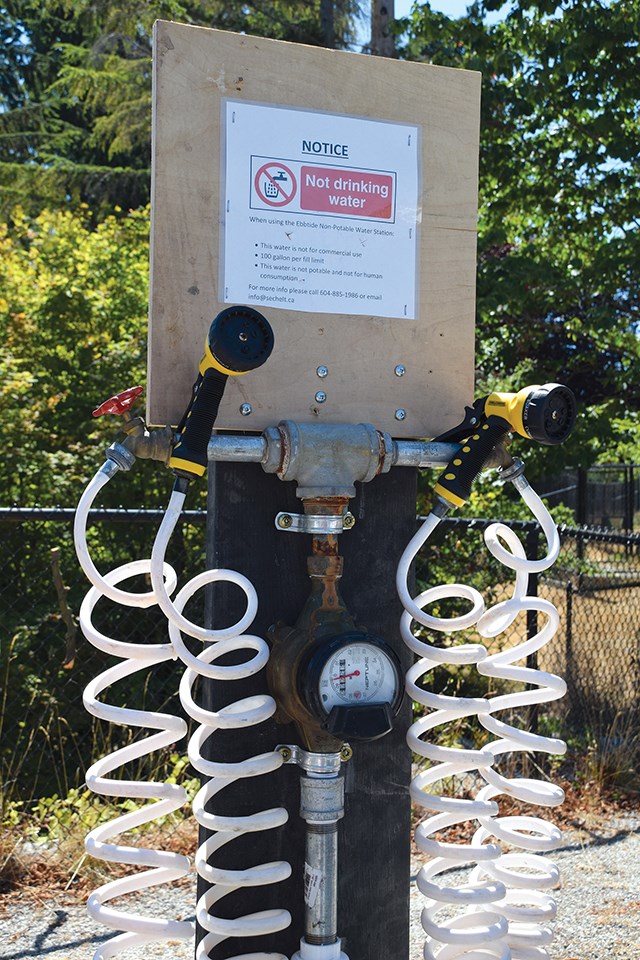Sechelt’s non-potable water filling station reopened to the public July 30. The station, near the south end of the Water Resource Centre (WRC) at 5678 Surf Circle, was relocated from the site created in 2015 to allow public access to water suitable for gardens and landscape plants during water use restrictions.
In a press release, the district said water from the station is safe for use on plants or for outdoor cleaning purposes, but not for human consumption or bathing. Sechelt stipulates that the source is not to be used for commercial purposes or for the washing of equipment or vehicles. To help avoid lineups at the site, it asks that users fill only a “few buckets at a time” as the station supply flow is about the same as an average household tap.
Mayor Darnelda Siegers said in the release, “I am pleased that we are able to offer this service to our citizens again this year. The new location for the tap should help improve its accessibility.”
Julie Rogers, communications manager, said the new installation cost $500 and was paid for from Sechelt’s general operating account.
According to its website, the municipality removed the public access filling station from its original location off Ebbtide Street in mid-2019. It is redeveloping that site into an off-leash dog park.
The site built in 2015 also cost about $500. Sechelt reopened it in subsequent summers when Stage 4 watering restrictions came into force. This year, the Sunshine Coast Regional District’s (SCRD) Chapman Creek water system, which supplies most area residents, remained on Stage 3 restrictions as public access was re-established.
Sechelt uses the same source of water to maintain its downtown-area hanging flower baskets and for other outdoor park uses. Water from the site is also being accessed for non-potable uses at the WRC.
Meghan Lee, Sechelt’s director of development engineering and sustainability, told Coast Reporter that the WRC started using groundwater to augment the process water in mid-April this year. “It has resulted in an average monthly potable water use savings of 36 percent compared to the same period last year. Since the well has been brought online, over 2800 cubic metres of SCRD water has been saved.”
The design of the WRC, which opened in 2014, had been touted by the council of the day as one that would reclaim non-potable water from incoming effluent to meet demands at the site and elsewhere in the community. Although there has been use of reclaimed water within the facility, Sechelt has not moved forward with plans to distribute reclaimed water off the site.



